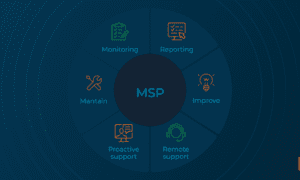For any new therapy to reach the patients who need it, it must first navigate a formidable and complex global regulatory landscape. In the life sciences industry, this landscape is built upon a foundational set of principles known as GxP, a term that encompasses a range of “Good ‘x’ Practice” guidelines designed to ensure the safety, efficacy, and quality of pharmaceutical products and medical devices.
These standards, including Good Clinical Practice (GCP) for trials and Good Manufacturing Practice (GMP) for production, were established to protect public health by guaranteeing that all regulated products are consistently safe and effective. Central to modern drug development are regulations like the U.S. Food and Drug Administration’s (FDA) 21 CFR Part 11, which governs the trustworthiness of electronic records, and the International Council for Harmonisation’s (ICH) GCP guidelines, which set the international standard for ethical and scientific trial conduct.
This unyielding demand for rigor exists in a state of natural tension with the intense pressure to accelerate development timelines and control the escalating costs of bringing new medicines to market.
Resolving this inherent conflict requires a new generation of leaders who possess a rare, cross-functional fluency in both technology and regulatory science. Sumesh Nair is an accomplished IT Technical Project Manager with 12 years of technology experience, including over seven years dedicated to delivering validated solutions for clinical research, pharmacovigilance, and regulated operations in the pharmaceutical industry.
His work is mission-critical, enabling drug development organizations to accelerate the delivery of safe and effective therapies by implementing and validating digital platforms in full compliance with FDA, EMA, and ICH regulations. What distinguishes his contribution is not merely the implementation of off-the-shelf systems, but the sophisticated design and execution of scalable, compliant, and risk-based validation frameworks that are meticulously tailored to the evolving regulatory landscape.
These frameworks optimize compliance without compromising data integrity or system performance, allowing for faster timelines for Investigational New Drug (IND) submissions, Biologics License Application (BLA) and New Drug Application (NDA) filings, and a state of continuous inspection readiness.
One of Nair’s most notable contributions was leading the validation and integration of GxP systems that supported the FDA’s traditional approval of Leqembi for Alzheimer’s disease, a national public health achievement underpinned by a robust digital infrastructure.
His innovative frameworks for AI model validation, implemented at companies like Eisai Inc. and Genmab, highlight how adopting a risk-based approach can significantly enhance financial and operational performance. His contributions are instrumental in developing a modern, patient-focused digital infrastructure that effectively balances speed, regulatory compliance, and innovation.

A new validation paradigm
The discipline of validating computerized systems in the pharmaceutical industry has long been anchored in structured, and often rigid, methodologies. Traditional Computer System Validation (CSV) was developed for an era of relatively static software, fostering a culture where exhaustive documentation was often equated with robust compliance.
However, the emergence of dynamic technologies like artificial intelligence (AI) and machine learning (ML), which are inherently iterative and data-dependent, has exposed the limitations of this one-size-fits-all approach. Applying a rigid validation framework to an adaptive AI model can create significant bottlenecks, stifling innovation without meaningfully enhancing safety or regulatory trust.
Nair’s strategy was born from direct experience with this challenge. “My method for validating AI models based on risk emerged from a clear yet pressing insight: conventional GxP validation techniques were not created to support the evolving, iterative characteristics of AI,” he explains.
“While working with intricate clinical and pharmacovigilance systems at companies like Eisai and Genmab, it became more apparent that using rigid, uniform validation frameworks for adaptable AI models created obstacles—hindering innovation without significantly enhancing compliance or trust.”
This insight led him to connect two distinct domains: the rigorous discipline of GxP compliance, with its emphasis on data integrity and lifecycle controls, and the agile, learning-driven world of AI. His deep background in GxP settings, leading validation for systems like Oracle Argus Safety, Veeva Vault, and Medidata EDC, provided the foundational understanding of risk-based principles and scalable controls necessary to withstand regulatory scrutiny.
This synthesis of GxP discipline and AI agility reframes validation from a documentation exercise into an intelligent risk-management activity. He developed frameworks that evaluate risk across key dimensions—including the model’s intended use, data sensitivity, complexity, and degree of automation—and tailor the depth of validation accordingly.
“For lower-risk, decision-support AI applications, simpler testing and traceability might be adequate; however, for high-stakes systems such as safety signal detection, I utilize comprehensive validation procedures that encompass model explainability, bias assessment, version control, and drift monitoring,” Nair states.
“This combined approach—rooted in GxP principles yet customized for AI—has allowed organizations to advance confidently with AI implementation, reassured that they can provide transparency, auditability, and clinical accountability without compromising agility.” This strategic balance represents a new philosophy where intelligence and targeted effort are valued over sheer volume, leading to a more mature and efficient compliance posture.
The value of risk-based validation
The imperative to control the immense costs and lengthy timelines of clinical development is a constant pressure point for the biopharmaceutical industry. A significant portion of these costs is dedicated to ensuring data quality and regulatory compliance.
Traditional approaches, particularly the practice of 100% Source Data Verification (SDV), have been shown to consume up to 25% of a trial’s budget, often with diminishing returns on data quality. Risk-based validation directly addresses this inefficiency by strategically reallocating resources to where they matter most.
The core principle of RBV is the intelligent prioritization of effort. “Unlike conventional methods, which often apply the same level of scrutiny to every system or function, RBV prioritizes validation efforts based on their potential impact on patient safety, data integrity, and regulatory compliance,” Nair explains. “This targeted approach reduces time and cost in several key ways.”
Instead of validating every system module with equal rigor, RBV allows teams to concentrate comprehensive testing on high-risk, critical-to-quality elements, such as safety data handling in a pharmacovigilance system. This focus aligns with modern quality principles like Validation 4.0 and ICH Q9 (Quality Risk Management), which advocate for focusing on attributes most vital to the product.
The economic benefits of RBV represent a sustained operational advantage. This is especially true in the modern era of agile development and evolving technologies.
“In the age of AI, RPA, and modular platforms like Medidata, Veeva, and Argus, RBV enables more responsive validation strategies,” says Nair. “For example, instead of revalidating an entire AI model when it is retrained, RBV supports targeted regression testing on high-impact outputs, cutting cycle time by up to 40–50% in some cases.”
This figure is supported by external research, which has shown that risk-based approaches can yield cost savings of 25% to 35% or more in large studies. This operational agility is a critical asset, as the ability to adapt a system quickly and without the cost of a full revalidation cycle allows an organization to be more responsive to scientific insights and regulatory feedback, ultimately accelerating the delivery of new therapies to patients.
Designing scalable frameworks
While the value of risk-based validation is clear, designing and implementing scalable frameworks that are both rigorous enough for regulators and efficient enough for innovation is a complex undertaking. The obstacles are not merely technical; they are deeply rooted in organizational culture and cross-functional dynamics.
Aligning expectations across diverse teams, for instance, is a formidable challenge. “A key challenge was shifting the mindset that ‘more documentation equals better compliance,’ as excessive paperwork often creates unnecessary burdens without enhancing quality,” Nair reflects. “Aligning expectations among cross-functional teams—from IT and QA to regulatory affairs—was another obstacle, as each had different risk tolerances and validation needs.”
Each department views risk through a different lens: IT prioritizes system stability, Quality Assurance focuses on audit readiness, and clinical teams are driven by operational timelines. Without a unified governance model, these competing priorities can lead to friction. The solution lies in creating flexible governance structures that establish a shared understanding of risk, transforming compliance from a siloed function into a collective responsibility.
The technical landscape presents its own set of difficulties. “Adapting validation strategies to modern technologies like AI/ML and cloud-based applications was essential, as traditional CSV methods were inadequate for frequently changing systems,” Nair states. “I designed frameworks that incorporated lifecycle monitoring, explainability testing, and performance drift tracking, aligning with GAMP 5, GxP, and Good Machine Learning Practices (GMLP).”
This is a critical point, as emerging regulatory guidance, such as the FDA-endorsed GMLP principles, explicitly calls for controls around model monitoring and lifecycle management—areas where traditional validation falls short. Fostering a true culture of compliance, where every stakeholder understands the importance of validation in protecting patient safety, is perhaps the greatest challenge.
By compelling teams to collaboratively define risk, the framework builds the cross-functional cohesion necessary for a modern, agile, and compliant organization.
Accelerating the LEQEMBI® approval
The true measure of any validation strategy is its performance under the pressure of a high-stakes regulatory submission. The journey of LEQEMBI® (lecanemab-irmb) from clinical trial to traditional FDA approval offers a compelling case study in how a sophisticated, risk-based approach can accelerate timelines and build regulatory confidence.
Developed by Eisai, LEQEMBI® is a breakthrough therapy for Alzheimer’s disease, and its approval was a landmark achievement supported by a robust and inspection-ready digital infrastructure. Nair played a pivotal role in validating the complex web of GxP systems that managed the data for this historic approval.
The pivotal Phase 3 CLARITY AD trial (NCT03887455) formed the basis of the drug’s approval, demonstrating a statistically significant 27% reduction in clinical decline. The digital ecosystem supporting this trial was immensely complex, involving the integration of multiple data sources into a central data lake and pharmacovigilance platforms like Veeva Vault Safety.
“A particular instance where risk-based validation played a critical role was during the integration and qualification of the data lake and reporting workflows supporting Clarity AD,” Nair recalls. “Traditionally, a project of this scale—connecting various data sources with Veeva Vault Safety and business intelligence layers—would have required months of exhaustive validation across all components.”
Instead of this time-consuming approach, Nair’s team applied a risk-tiering strategy. System components were categorized based on their direct impact on patient safety and data integrity, in full alignment with 21 CFR Part 11 and ICH GCP. High-risk modules, such as automated safety case processing, underwent full, protocol-driven validation. Conversely, lower-risk components, like internal dashboards, were validated using a fit-for-purpose approach.
“This approach enabled us to reduce the validation cycle time by nearly 40%, allowing the infrastructure to go live ahead of schedule, in lockstep with clinical and regulatory timelines,” Nair states.
“What made this truly impactful was not just the speed—but the confidence it gave our clinical, safety, and regulatory teams during FDA engagement.” This achievement reframes computer system validation from a back-office task into a strategic enabler of public health, demonstrating an ROI measured not just in saved costs, but in patient-months gained.
Quantifying success with metrics
To secure organizational buy-in, compliance activities must be translated into the language of business. A successful risk-based validation program is measured by its quantifiable impact on efficiency, cost, and quality. Communicating this impact requires a robust, metrics-driven framework that resonates with diverse stakeholders, from quality assurance to executive leadership.
“To demonstrate the impact to stakeholders—especially in highly regulated environments like clinical development and pharmacovigilance—I rely on a combination of process, performance, and quality metrics that are both data-driven and contextually aligned with business goals,” Nair explains. This framework moves beyond abstract claims of efficiency to provide concrete evidence of value. Key performance indicators are grouped into several categories that measure speed, cost, quality, and stakeholder value.
Process efficiency metrics include direct measures of speed, such as Validation Cycle Time Reduction, which tracks how much faster a system is ready for production, and Change Request Turnaround Time, which is critical for the agile management of evolving AI models. Financial impact is measured through metrics like Cost Avoidance and Resource Efficiency, which quantify savings from minimizing over-validation.
Quality and compliance are measured through an Audit and Inspection Readiness Score, which assesses the defensibility of the validation package and aligns with the Quality Metrics Meeting Summary. Finally, stakeholder value is gauged through qualitative metrics like Stakeholder Confidence and Adoption Rate, assessing the cross-functional buy-in essential for successful technology deployment.
Effectively communicating these metrics is as important as collecting them. Different stakeholders respond to different value propositions: finance is focused on ROI, QA on risk mitigation, and clinical operations on speed.
“By pairing quantitative results with clear visualizations and cross-functional language, I ensure that compliance, IT, clinical, and executive stakeholders all understand the value and security that risk-based AI validation brings—not just in theory but in measurable, business-critical terms,” Nair notes.
He utilizes executive dashboards to summarize KPIs, risk matrices to visualize where validation efforts are focused, and regulatory readiness briefs to present traceability in a format aligned with inspector expectations. This strategic communication secures the organizational alignment necessary to implement innovative frameworks.
Fostering a culture of compliance
The impact of a well-designed validation framework extends far beyond the system it qualifies; it can catalyze profound organizational change. By embedding risk-based principles into the core of technology implementation, it is possible to shift an organization’s entire approach to compliance—from a reactive, checkpoint-driven activity to a proactive culture of “compliance by design.”
This cultural evolution has been a central outcome of Nair’s work. “Traditionally, validation was viewed as a compliance checkpoint that occurred late in the system lifecycle,” he observes. “Through my work, we shifted that mindset toward ‘compliance by design’—embedding validation, traceability, and documentation standards from the earliest stages of system implementation.”
This proactive stance delivers tangible benefits. By establishing standardized templates and audit-ready documentation structures from the outset, the need for last-minute preparations before an inspection is drastically reduced.
Systems are maintained in a constant “state of control,” ensuring they can withstand scrutiny from regulatory bodies like the FDA and EMA at any time. This approach directly aligns with the principles of mature quality systems, as outlined in frameworks like ICH Q10, which emphasize proactive risk management throughout the product lifecycle.
The process of collaboratively defining risk forces conversations that might not otherwise happen, revealing and resolving hidden misalignments between departments. This cultivates a culture of shared ownership. “One of the most significant results has been a culture change: quality and inspection preparedness are now not just the responsibility of QA or validation teams,” Nair emphasizes.
“My frameworks encourage shared accountability across IT, clinical, regulatory, and business stakeholders.” When everyone, from an AI developer to a business analyst, understands their role in upholding compliance, the entire organization becomes more resilient.
Earning regulatory confidence
The ultimate test of any innovative validation strategy is its reception by regulatory authorities. During a high-stakes FDA inspection, a well-justified, transparent, and risk-based approach can not only meet but exceed expectations, transforming a potentially adversarial encounter into a collaborative dialogue.
In the context of the LEQEMBI® submission, the validation strategy was a point of positive feedback. “During the inspection phase, regulatory reviewers from the FDA specifically acknowledged the clarity, auditability, and proportionality of our validation approach,” Nair shares. “They were particularly impressed with how our risk-tiered documentation structure differentiated high-risk system functions—such as regulatory safety reporting workflows—from lower-risk components like visualization layers.”
This feedback is significant because it directly affirms the core principles of risk-based validation: focusing effort where it matters most and providing a clear, defensible rationale for those decisions. This proportionality streamlined the auditors’ review process and built their confidence in the reliability of the data underpinning the submission.
This positive reception extended to the most innovative aspects of the systems, including the governance around AI-enabled components. The frameworks included documented explainability assessments and lifecycle monitoring plans, addressing the very concerns that regulators have highlighted in emerging guidance on AI and GMLP.
“Instead of challenging the implementation of AI, auditors concentrated on the controls and governance we had established, leading to a change in the inspection’s tone from examination to collaboration,” Nair recounts.
“This feedback validated not just the systems we deployed, but the broader philosophy I advocate that risk-based, adaptive validation, when executed with rigor and transparency, can both meet and exceed regulatory expectations.” This experience demonstrates that a mature validation strategy is a powerful tool for building regulatory trust, an invaluable asset that leads to smoother inspections and fosters a more collaborative long-term relationship with regulatory agencies.
The future of compliant innovation
As artificial intelligence continues to reshape every facet of clinical development, the methodologies used to ensure its compliant implementation must also evolve. The era of treating validation as a static, one-time event is drawing to a close. The future belongs to a more dynamic and intelligent approach that seamlessly blends data science, regulatory compliance, and ethical oversight.
This evolution is already underway, with regulatory agencies actively developing new guidance to address the unique nature of AI. “I believe we’re entering an era where validation will evolve from being a static regulatory requirement to a dynamic, lifecycle-driven discipline that blends data science, compliance, and ethical oversight,” Nair predicts. “Regulatory agencies are already moving in this direction, with evolving guidance around Good Machine Learning Practice (GMLP) and algorithm change protocols.”
This vision aligns perfectly with emerging regulatory concepts like the FDA’s guidance on Predetermined Change Control Plans (PCCPs), which provide a pathway for managing AI models that learn and evolve after deployment. This shift means the object of validation is changing—from the static system itself to the dynamic governance process that manages its lifecycle.
Looking ahead, the emphasis on explainability, bias detection, and ethical transparency will only intensify. As AI models increasingly influence critical decisions, validation efforts must expand beyond purely technical testing to include comprehensive impact assessments and robust human oversight safeguards. This is the new frontier where regulatory science, ethics, and engineering converge.
“My goal is to contribute to industry-wide best practices through thought leadership, cross-industry collaboration, and standards development, while mentoring the next generation of professionals navigating this space,” Nair concludes.
“Ultimately, I want to ensure that AI in clinical research is not only powerful, but also accountable, explainable, and safe for patients—and that validation remains a cornerstone of that trust.” His work, including plans to share frameworks at leading forums like ISPE conferences and publications, positions him at the forefront of this movement, helping to build the compliant and trustworthy digital ecosystem that will define the future of medicine.
In an era of unprecedented technological advancement and escalating development costs, the traditional, burdensome approach to regulatory compliance is no longer tenable. The work of Nair demonstrates that a sophisticated, risk-based validation strategy—particularly for the complex world of artificial intelligence—is not a compromise on quality but a strategic imperative for success.
By intelligently focusing resources on what truly impacts patient safety and data integrity, his frameworks have been shown to unlock significant operational efficiencies, accelerate timelines for critical therapies like LEQEMBI®, and build deep and lasting trust with regulators. This modern approach, which proves that speed, compliance, and innovation are not mutually exclusive but complementary pillars, provides a clear and actionable blueprint for building the resilient, patient-centric digital infrastructure that will define the future of medicine.


































